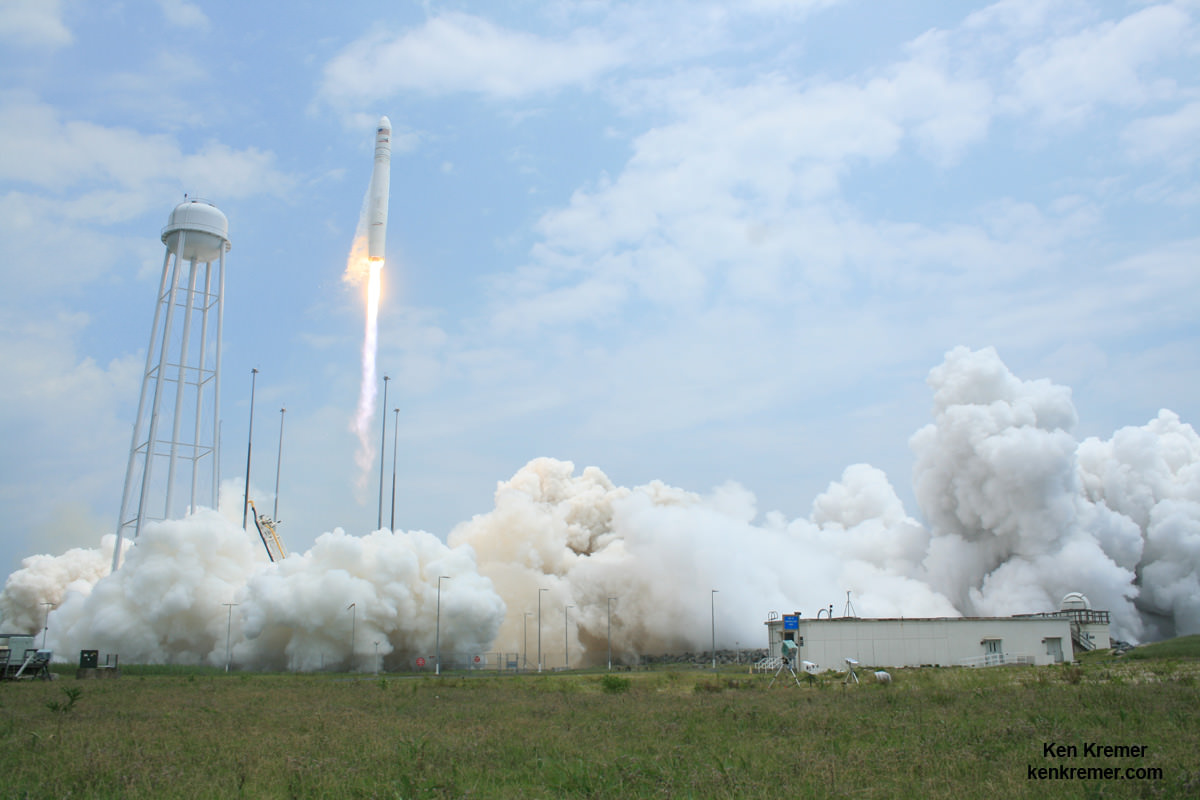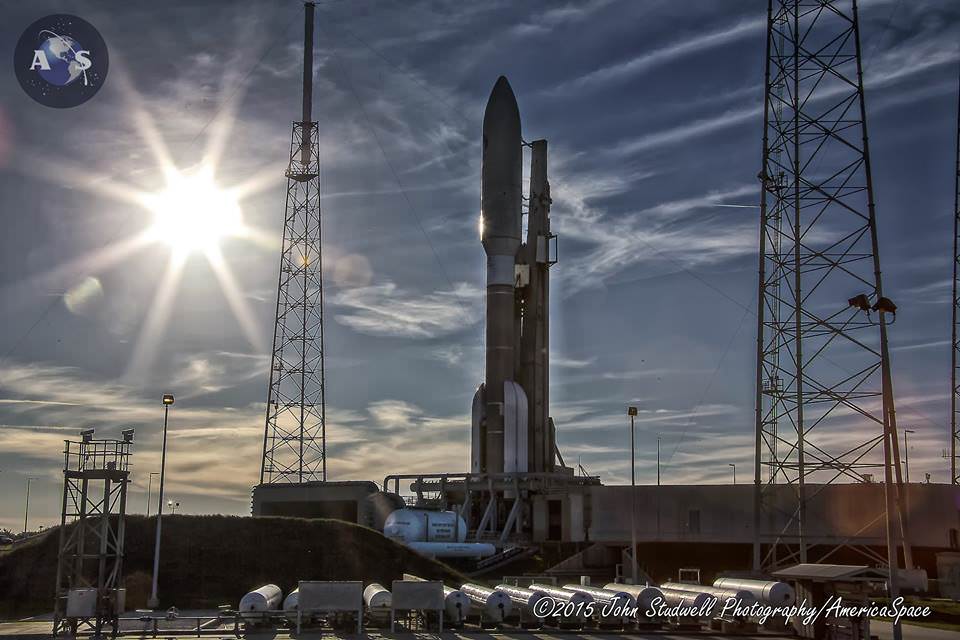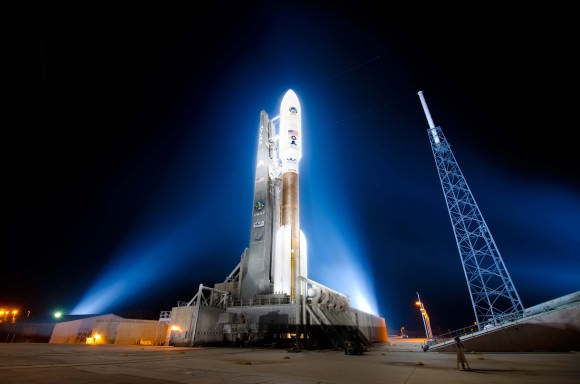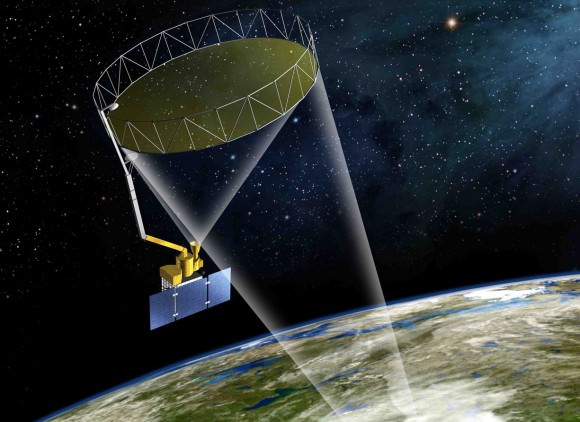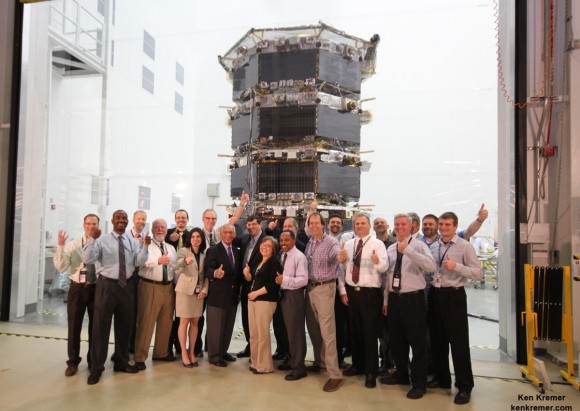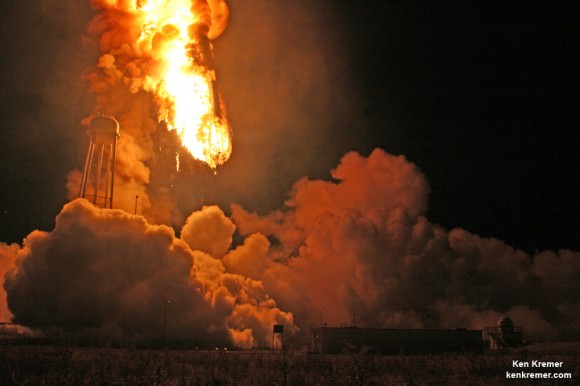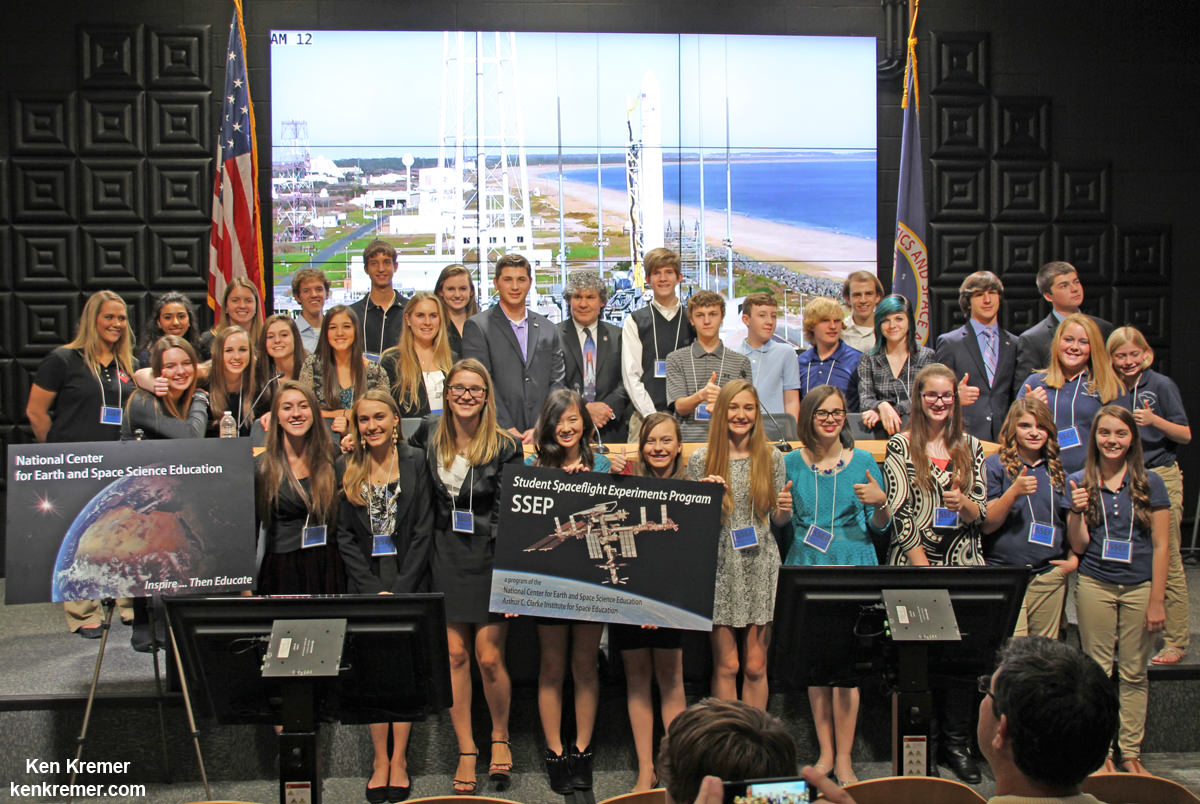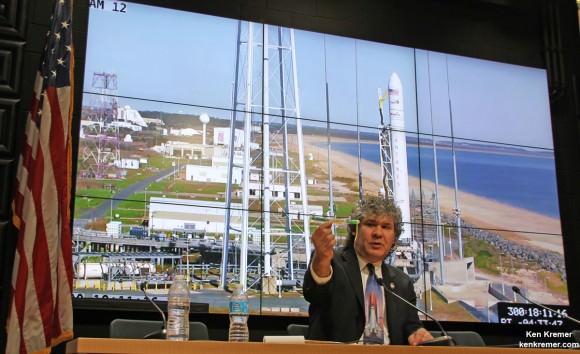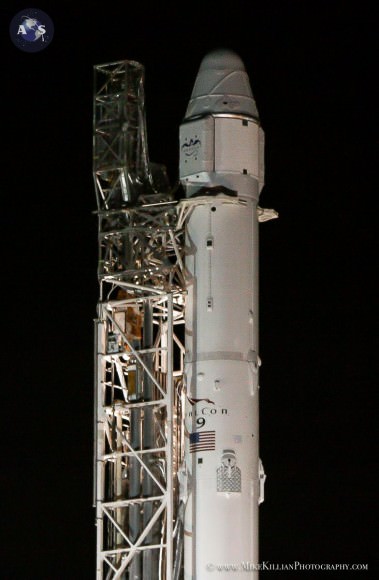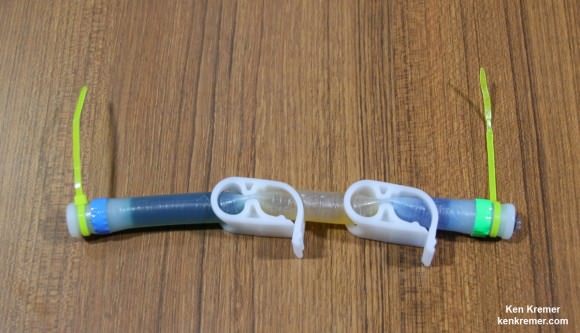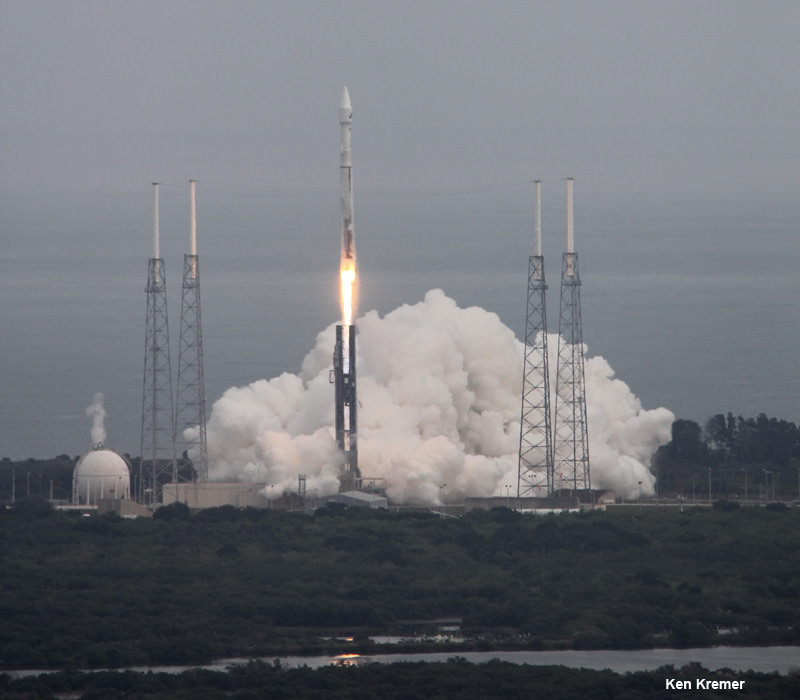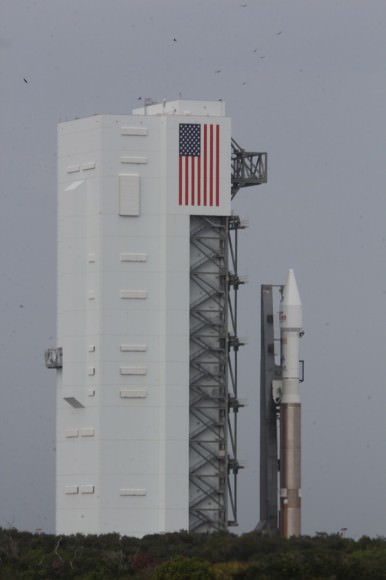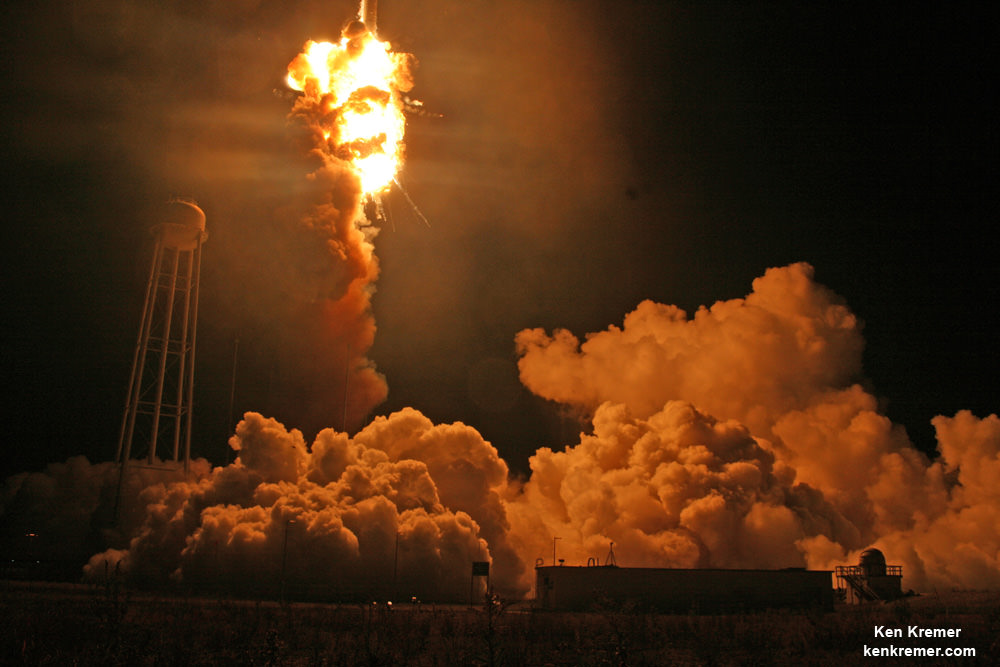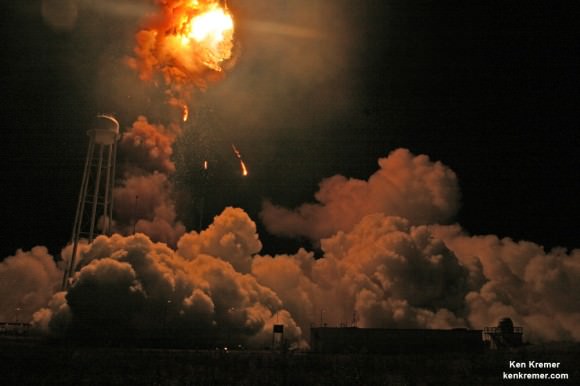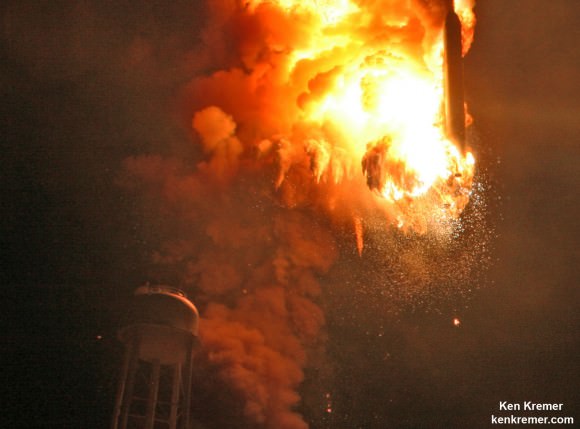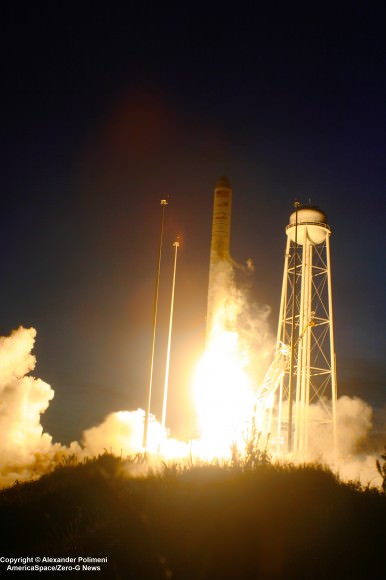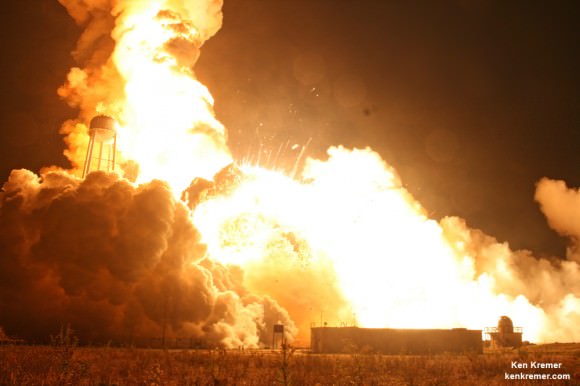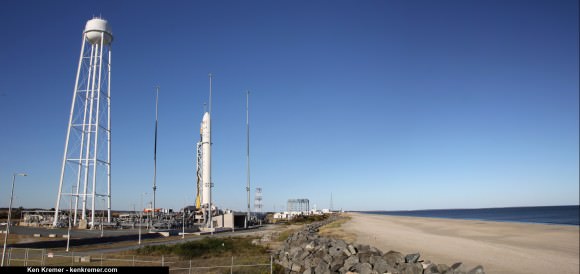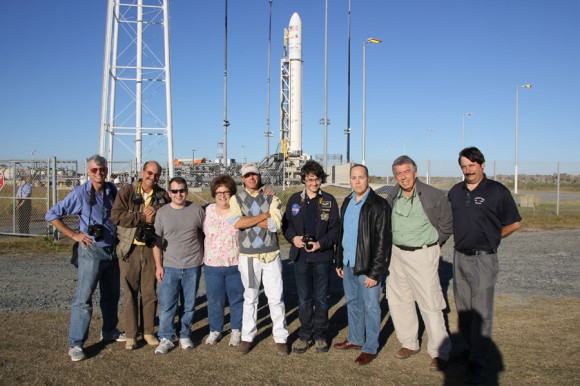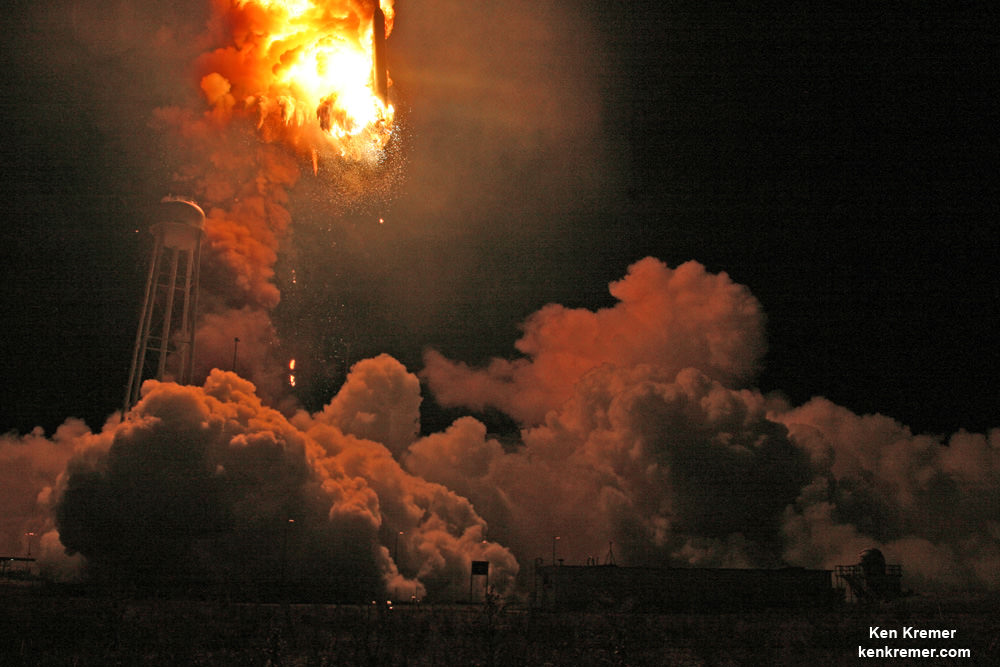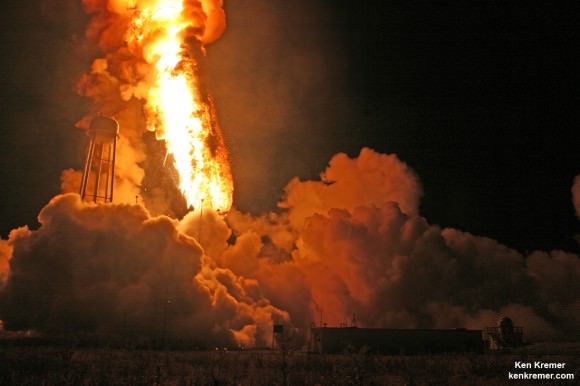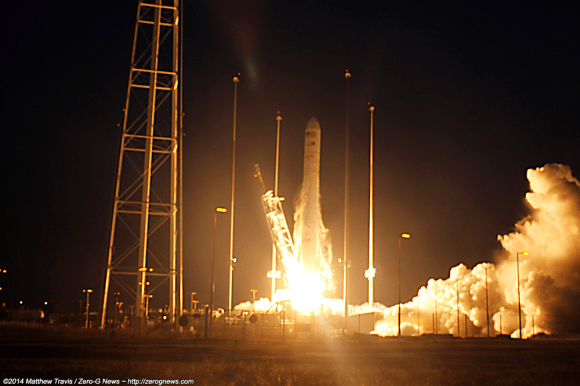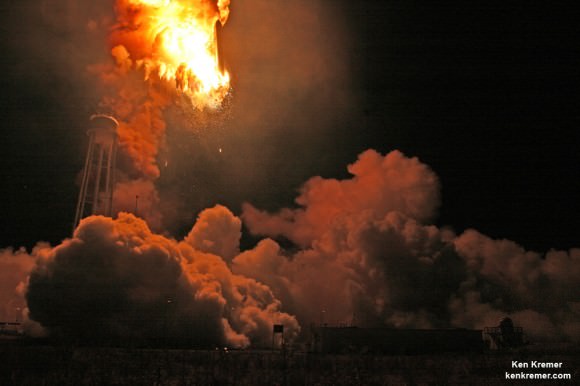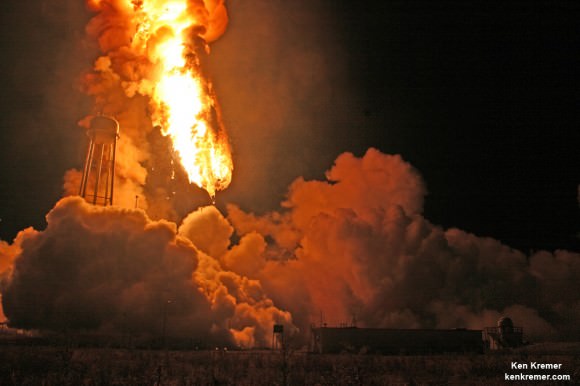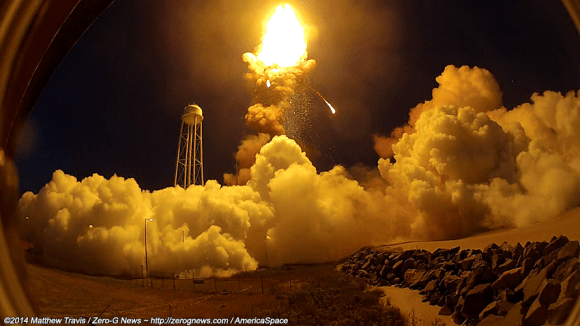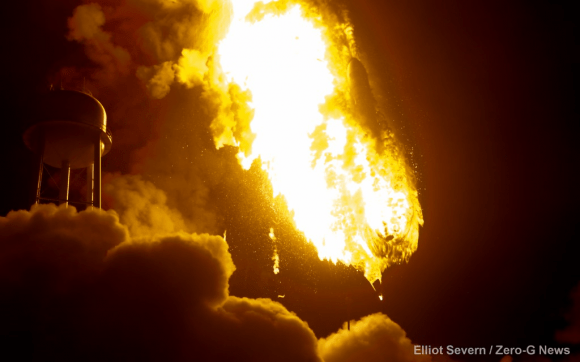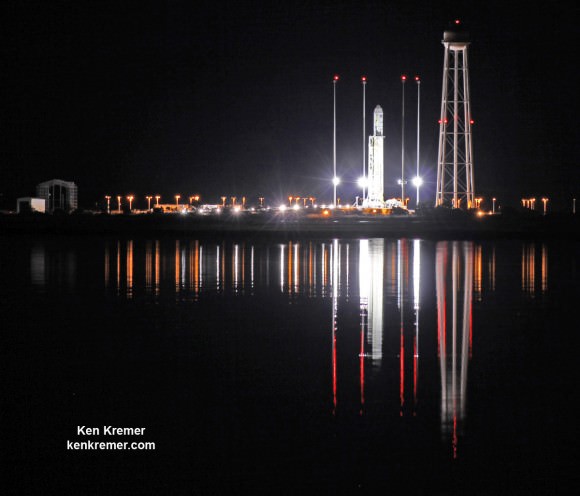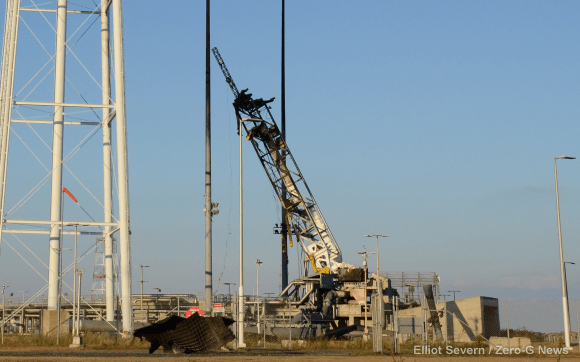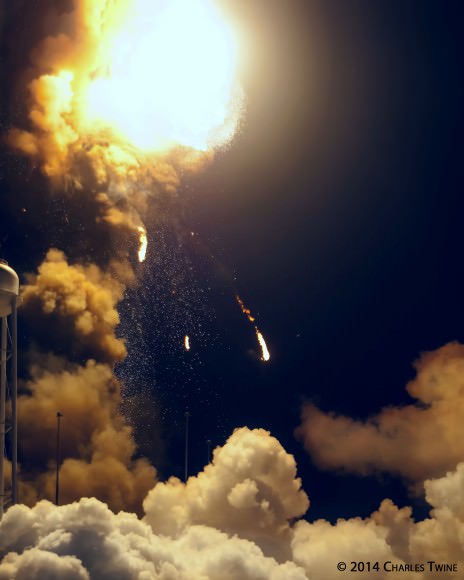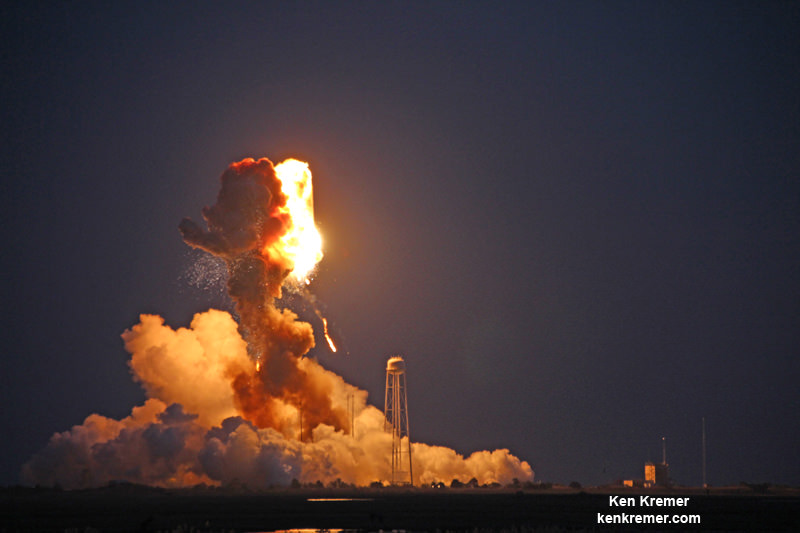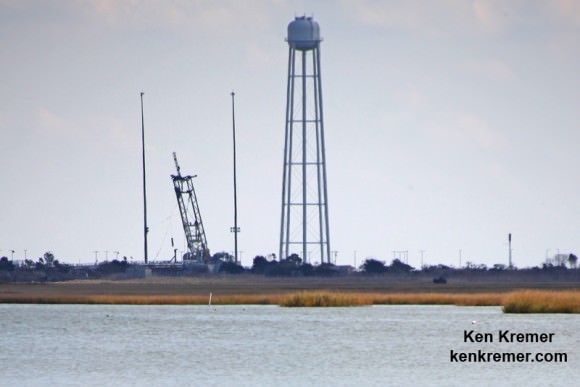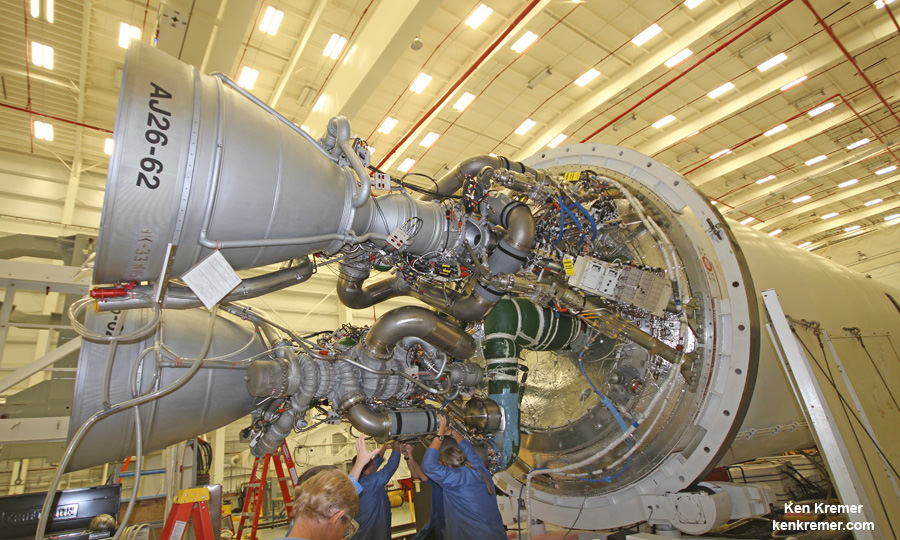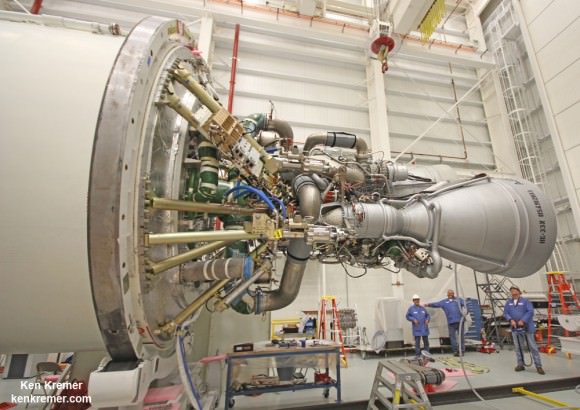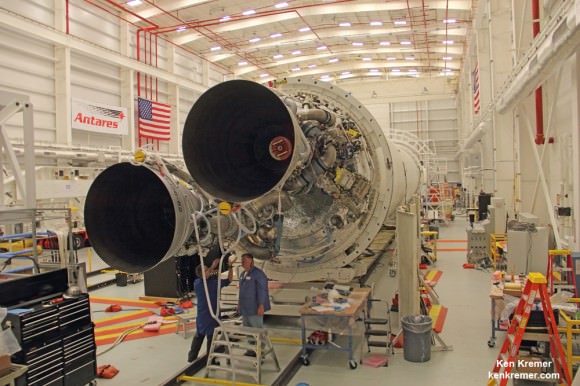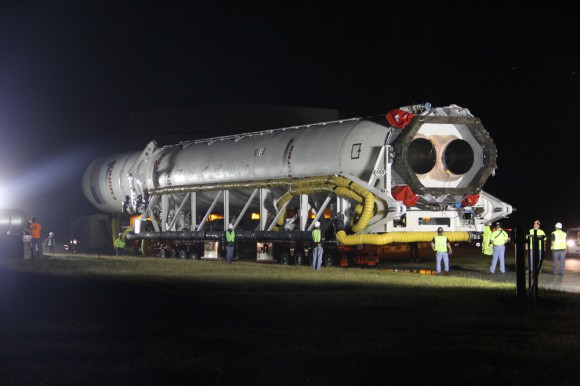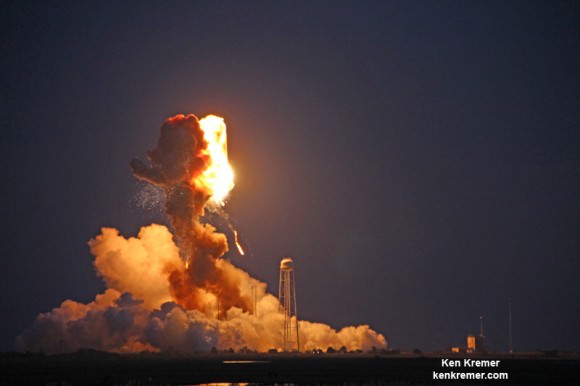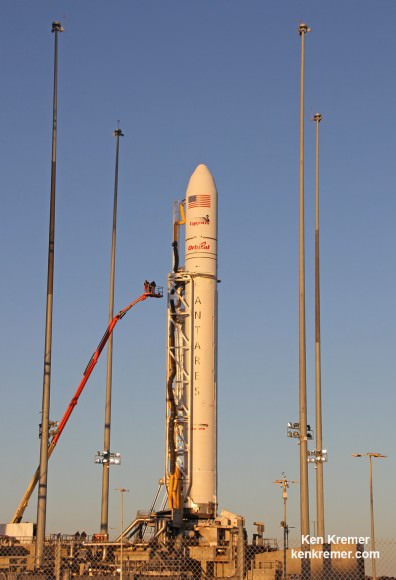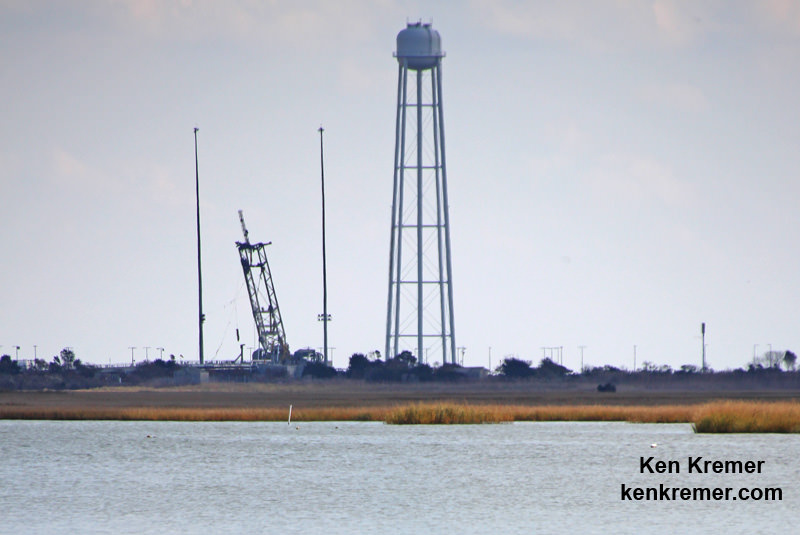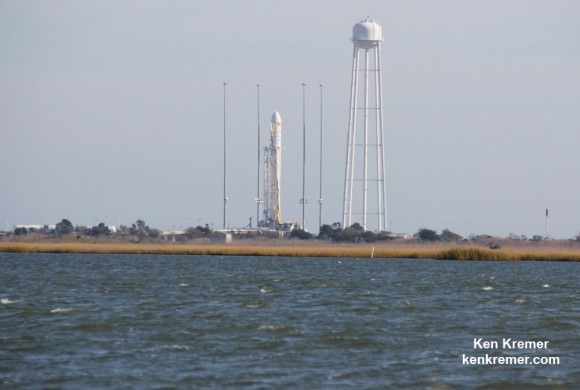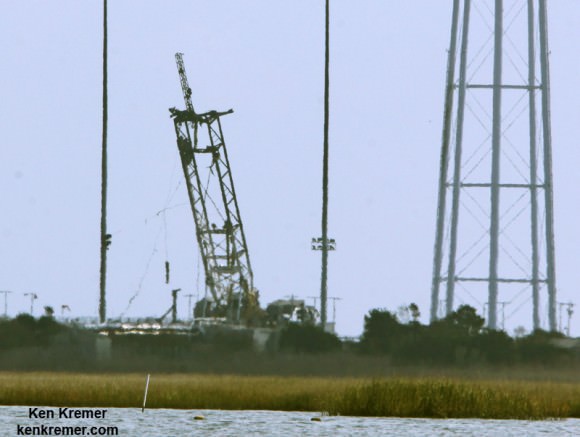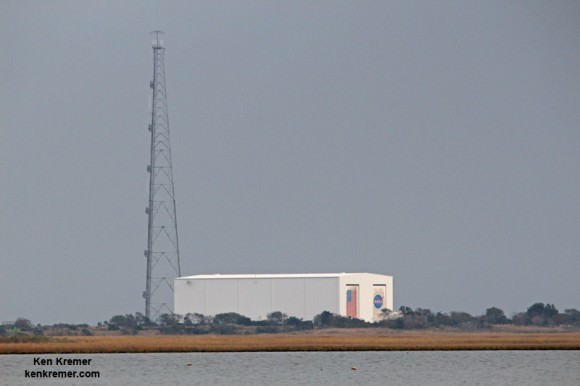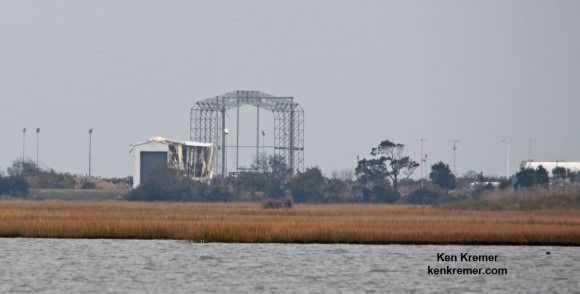The newly merged company Orbital ATK is aiming to restart launches of their “upgraded Antares” rocket in March 2016 using completely new engines, following the catastrophic explosion on Oct. 28, 2014 that destroyed the rocket seconds after blastoff from a Virginia launch pad. Antares was carrying a Cygnus module loaded with supplies on a critical space station resupply mission for NASA.
The March 2016 launch date of Antares from the Wallops Island base along Virginia’s eastern shore was announced by David Thompson, Orbital ATK, President and CEO, during a recent conference call with investors and analysts regarding the formal merger of Orbital Sciences and ATK.
“The target date for that [Antares launch] is the 1st of March next year,” said Thompson.
Cygnus will be fully loaded with new supplies for the station crew.
“The first launch … will have a full cargo load on board.”
The Orbital Sciences Corp. commercial Antares rocket was destroyed in a raging inferno about 15 seconds after liftoff on Oct. 28 when one of the Soviet-era built first stage engines apparently exploded and cascaded into a spectacular aerial fireball just above the launch pad 0A at NASA’s Wallops Flight Facility on the doomed Orb-3 mission carrying the Cygnus resupply module to the International Space Station (ISS).
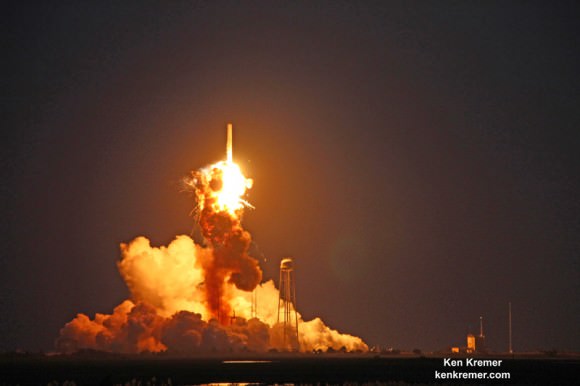
Orbital’s privately developed Cygnus pressurized cargo freighter was loaded with nearly 5000 pounds (2200 kg) of science experiments, research instruments, crew provisions, spare parts, spacewalk and computer equipment and gear on the Orb-3 mission. The module and all its contents were destroyed.
Orbital established an independent accident investigation review board immediately following the launch failure.
“We are about four months now into the recovery from the failure,’ said Thompson.
A turbopump failure in one of the rockets Soviet-era first stage engines has been identified as the most likely cause of the Antares destruction, according to official statements from David Thompson.
The AJ26 engines were originally manufactured some 40 years ago in the then Soviet Union as the NK-33. They were refurbished and “Americanized” by Aerojet Rocketdyne.
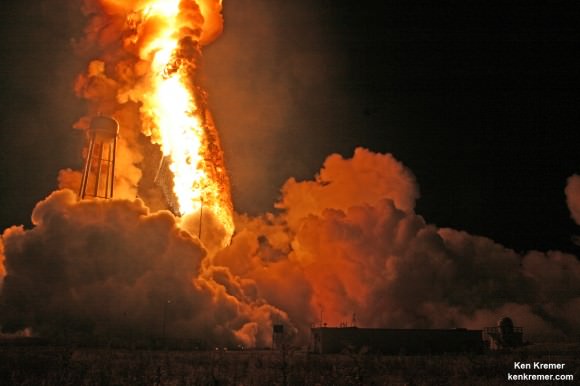
“The next Cygnus will be launched on the upgraded Antares from Wallops Island. The target date for that is the 1st of March next year.”
After the launch failure Orbital, decided to ditch the trouble plagued AJ-26 and “re-engineered” the vehicle with new engines.
The Antares first stage had been powered by a pair of the aging AJ26 engines. These will now be replaced by a pair of newly manufactured Russian RD-181 engines, assembled and purchased from NPO Energomash.
“The first launch of the re-engineered vehicle in March of next year … will have a full cargo load on board.”
Thompson said the March 2016 launch target date will be preceded by a hot fire test of the first stage engines, which is currently planned to take place in January 2015. They will not conduct a demonstration launch and have opted for a full up space station resupply flight.
“We’re going to go with the cargo load on the first launch. What we are going to do in advance of that, in January of next year, is we’re going to take the first stage of Antares out to the launch pad with the new engines and do a flight readiness firing, somewhat similar to what we did back in early 2013, in advance of the first Antares flight,” said Thompson.
“But other than that, unless something came up there that was surprising, we should then be able to proceed pretty expeditiously to the first launch of the re-engineered vehicle in March of next year, and that will have a full cargo load on board.”
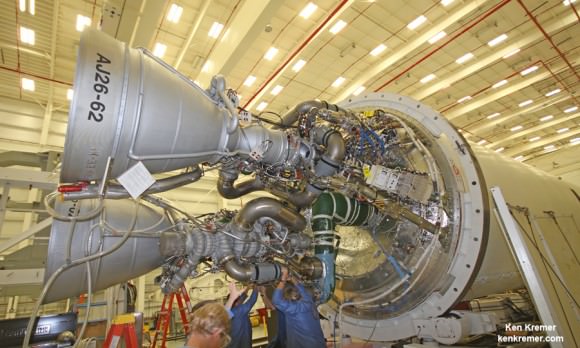
Thompson also reiterated that Orbital will fully meet its resupply services contarct with NASA and make up for the lost cargo.
The Orbital-3, or Orb-3, mission that ended in disaster on Oct 28, was to be the third of eight cargo resupply missions to the ISS through 2016 under the NASA Commercial Resupply Services (CRS) contract award valued at $1.9 Billion. Under the CRS program Orbital is to deliver 20,000 kilograms of research experiments, crew provisions, spare parts, and hardware for the eight ISS flights.
“The focus all along has been to do everything we can to fulfill our commitments to delivering cargo to the space station for NASA, and to minimize any disruption that we can to the delivery schedules.”
Towards that end Orbital ATK has contracted with United Launch Alliance (ULA) to launch at least one and up to two Cygnus cargo missions to the International Space Station (ISS) under NASA’s Commercial Resupply Services (CRS) program.
The first Cygnus mission would liftoff sometime late in the fourth quarter of 2015 aboard an Atlas V 401 vehicle from Space Launch Complex 41 (SLC-41) at Cape Canaveral Air Force Station in Florida.
I watched the unfolding disaster first hand from the media viewing site about 1.8 miles away and filed eyewitness reports at the time. Several of my launch pad remote cameras were set up at the pad. They were impounded and the images were used by investigators during the initial investigation. They were returned to me about a month later and are featured here and in my earlier Antares reports.
Watch here for Ken’s ongoing reporting about Antares and NASA Wallops.
Stay tuned here for Ken’s continuing Earth and Planetary science and human spaceflight news.


